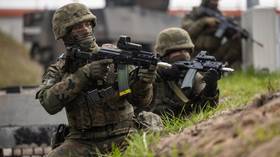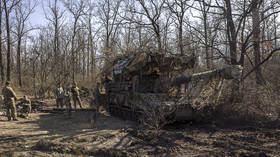European NATO members €56bn behind on military spending – FT

European members of NATO are €56 billion ($61 billion) short of meeting the US-led bloc’s minimum defense spending target, research for the Financial Times by Germany’s Ifo Institute has suggested.
Washington accounted for two-thirds of NATO’s $1.3 trillion total spending in 2023, more than double the $393 billion jointly contributed by EU countries and the UK and Norway, the newspaper outlined on Saturday.
According to the research, Germany, Italy, Spain, and Belgium were the furthest from meeting the bloc’s goal of investing 2% of GDP in defense, which NATO members agreed in 2014 following the outbreak of hostilities in Ukraine and Crimea’s reunification with Russia.
Berlin spent $15.2 billion less than required last year, while Rome, Madrid, and Brussels were $12 billion, $11.7 billion, and $5.1 billion behind respectively, Ifo’s figures suggested.
Italy, Spain, and Belgium were among the six EU nations with debt above 100% of their GDP last year, the FT noted.
The research showed that the overall shortfall in NATO spending by European countries has reduced by half over the past decade. The bloc has stated that it expects 18 of its 32 members to meet the 2% benchmark in 2024.
Ifo economist Marcel Schlepper told the FT that some members might find it difficult to boost spending to the required level amid slowing economic growth in the EU.
“Countries with high debt levels and high interest costs do not have much room to raise more debt, so the only real way to do it is to cut spending in other areas,” Schlepper explained. “This is not easy, as we saw when Germany tried to cut subsidies on agricultural diesel and the farmers came out in protest.”
Former US leader Donald Trump, who pushed hard for EU countries to contribute more to NATO during his presidency, warned last month that he “would not protect” from Russia any members that fail to meet the 2% spending goal, should he win a second White House term in the November election.
“I said you didn’t pay, you’re delinquent… In fact, I would encourage them to do whatever the hell they want. You got to pay your bills,” Trump stressed.
Russian President Vladimir Putin said on Sunday that he “doubts that anyone is interested” in a direct military confrontation between Moscow and NATO, as that scenario would mean “we’ll be one step away from World War III.” He cautioned, however, that “everything is possible in the modern world.”













